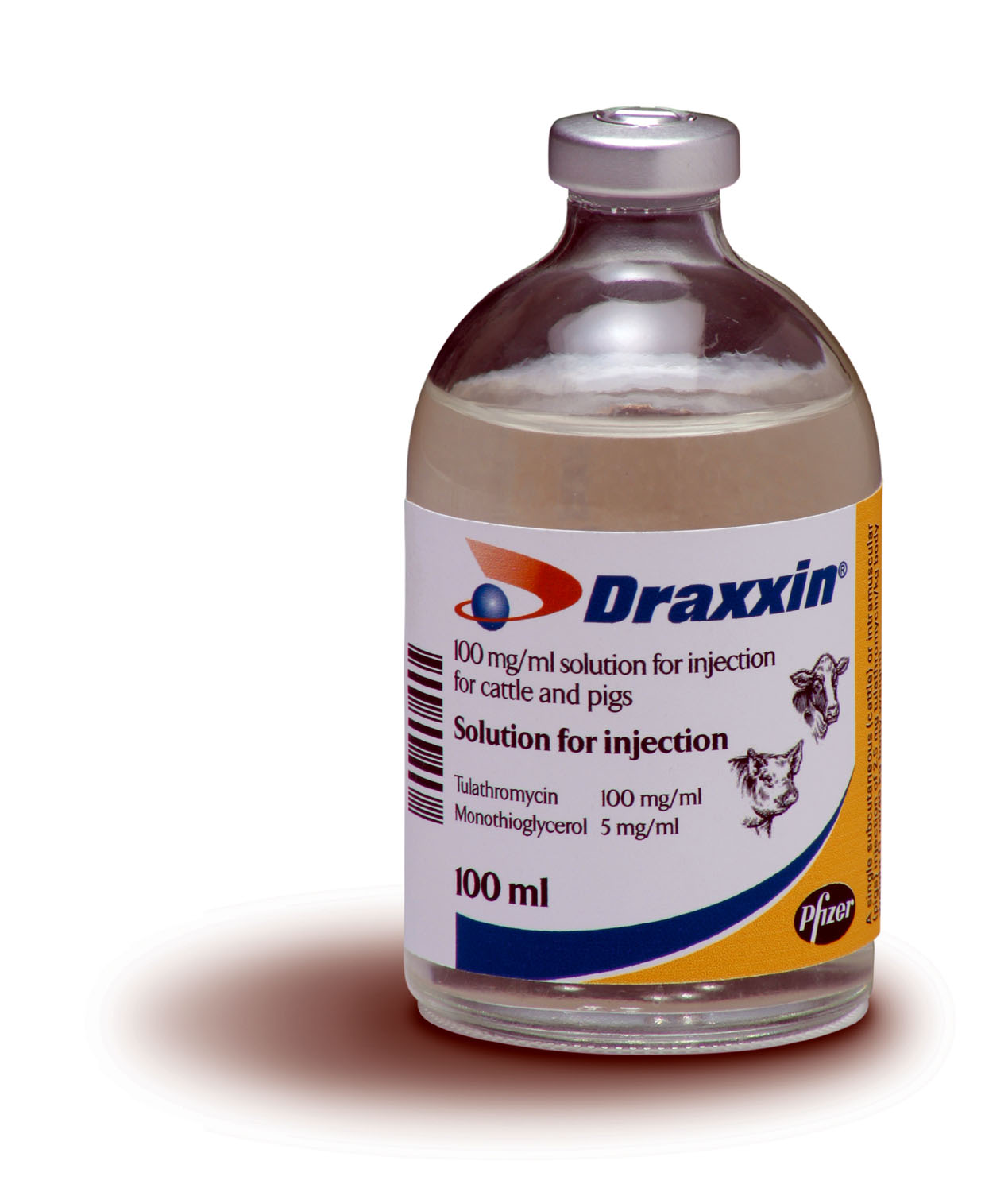
A new approval for one of the leading injectable antibiotics is set to reduce the impact of swine respiratory disease on pig health and performance.
It is now possible for the first time to use an injectable product – the long-acting, single dose Draxxin — for prevention, as well as treatment, of the disease.
The latest decision by the EU licensing authority means that groups of pigs can be treated at times when they are most at risk of infection.
Up to now group therapy has relied on feed or water medication. Sick pigs tend not to eat or drink normally, and the dose they receive is therefore unpredictable. The shortcomings of such medication are well recognised and other approaches are increasingly preferred.
Draxxin not only achieves predictable dosing but provides the complete course of treatment — up to 15 days' antibiotic activity — with a single injection. In three years it has become the top selling injectable brand against swine respiratory disease in the European market.
Many farms experience outbreaks of respiratory disease at key points in the production cycle, said Nigel Lodge, technical services manager of Pfizer Animal Health. "Pigs are particularly vulnerable when they are subject to stress after moving and handling, following weaning and in the early fattening period.
"We know that individual farms tend to have a definable disease pattern which enables preventative medication to be used strategically when the risk of outbreak is greatest," he said. "With an injectable product, you know that all the pigs are given the correct dose compared with all the uncertainties associated with water or feed medication."
He said that studies in Germany and the Netherlands had shown the efficacy of in-contact treatment with Draxxin.
The East German fattening unit had a history of respiratory problems occurring after around 30 days in the finishing house. A group of 1500 pigs were given one dose of Draxxin or eight days' in-feed medication with doxycycline (12.5 mg/kg) on arrival. The Draxxin group required less re-treatment, had a daily weight gain 25 grams higher and went to slaughter an average of nine days earlier at a higher carcase weight. The result was extra profitability of 1.71 euros (£1.20) per pig. ……MORE
The Dutch unit, with 450 sows and 120 gilts on one site and 3000 fatteners on another, experienced increased respiratory problems after a PRRS outbreak, with post-mortem results showing 52 per cent of lungs with lesions and 37 per cent with pleuritis. New management measures to interrupt the infection cycle, supported by Draxxin three days before weaning, led to decreased disease, less antibiotic use in the finishing unit and the number of pigs with lung lesions dropping to 2.8 per cent and with pleuritis to 4.3 per cent.
Draxxin is one of a series of single-dose therapies introduced by Pfizer, requiring less labour than multi-dose treatments and ensuring that the full therapy is provided. The convenience of the single dose, combined with a high clinical cure rate, has already made the product popular with farmers and their veterinary practitioners.
Draxxin, containing the antibiotic tulathromycin, is rapidly distributed to infected tissues where it remains above the minimum inhibitory concentration of key respiratory pathogens for an extended period — up to 15 days for Mycoplasma hyopneumoniae, up to 9 days for Actinobacillus pleuropneumoniae and up to 5 days for Pasteurella multocida.
